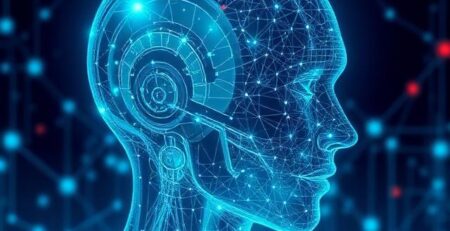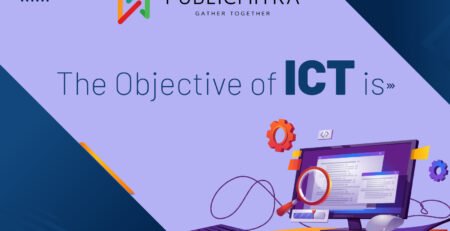AI Industry Revolution: 8 Groundbreaking Developments That Are Reshaping Technology This Week
The Most Transformative Week in AI History
The second week of July 2025 will be remembered as a pivotal moment in artificial intelligence development. Eight major announcements have collectively reshaped the competitive landscape, introducing revolutionary technologies that promise to transform how we interact with digital systems, create content, and solve complex problems.
From Perplexity’s groundbreaking AI-powered browser to xAI’s state-of-the-art Grok 4 model, this week represents a seismic shift in AI capabilities. These developments span multiple domains including web browsing, language modeling, creative tools, enterprise software, and scientific research, signaling a new era of AI integration across industries.
1. Perplexity Comet: Revolutionizing Web Browsing with AI Integration
The Future of Internet Navigation
Perplexity on Wednesday launched its first AI-powered web browser, called Comet, marking the startup’s latest effort to challenge Google Search as the primary avenue people use to find information online. This represents the most significant innovation in web browsing since the introduction of tabbed browsing.
Comet transforms the fundamental browsing experience by embedding large language models directly into the browser architecture. Comet learns how you think, collaborates in your research, and keeps your digital life organized—so you’re never lost in tabs or forget what inspired you. The browser offers instant explanations for any highlighted text, contextual research assistance, and seamless integration with AI-powered search capabilities.
Technical Architecture and Capabilities
The browser operates on a sophisticated hybrid AI architecture, combining local processing for basic tasks with cloud-based APIs for complex operations. This approach ensures optimal performance while maintaining user privacy through local data storage and multiple tracking protection modes.
Key features include:
- Contextual Understanding: The browser comprehends the content you’re viewing and provides relevant assistance
- Multi-language Support: Instant translation and explanation capabilities across languages
- Research Collaboration: AI assists in organizing and connecting related information across multiple sources
- Privacy-First Design: Local data processing with strict tracking protection options
Market Impact and Accessibility
Currently available exclusively to Perplexity Max subscribers at $200 monthly, Comet represents a premium approach to AI-enhanced browsing. This pricing strategy positions the browser as a professional tool for researchers, analysts, and knowledge workers who require advanced AI assistance in their daily workflows.
The browser’s launch signals a direct challenge to traditional search engines and browsers, potentially reshaping how users discover and interact with online information. Early adoption metrics will be crucial in determining whether AI-powered browsing represents a fundamental shift in user behavior or a niche professional tool.
2. xAI’s Grok 4: Achieving New State-of-the-Art Performance
Breakthrough Performance Metrics
On Humanity’s Last Exam, an extensive test designed to evaluate general knowledge, Grok 4 scored 25.4% without using external tools, outperforming OpenAI’s o3 (high), which scored 21%, and Gemini 2.5 Pro, establishing new benchmarks in AI reasoning capabilities.
The model has achieved unprecedented performance across multiple evaluation metrics:
- ARC-AGI-2 Score: 15.9%, nearly doubling previous commercial state-of-the-art benchmarks
- GPQA Performance: 87-88% accuracy in graduate-level physics questions
- SWE Bench Results: 72-75% success rate in software engineering tasks for Grok 4 Code variant
Advanced Architecture and Applications
Grok 4 represents a significant leap in AI model architecture, incorporating advanced reasoning capabilities that enable complex problem-solving across diverse domains. The model demonstrates particular strength in scientific reasoning, mathematical problem-solving, and code generation tasks.
Elon Musk has indicated that Grok 4 utilizes the same underlying technology employed by physicists for complex calculations, suggesting enterprise-grade computational capabilities. This positions the model as a potential solution for advanced scientific research, engineering simulations, and complex data analysis tasks.
Premium Subscription Model
The launch introduces SuperGrok Heavy, a $300 monthly subscription tier that provides access to Grok 4’s full capabilities. This premium pricing reflects the model’s advanced capabilities and positions it as a professional-grade AI tool for specialized applications requiring superior reasoning and analytical capabilities.
3. Mistral’s Devstral Models: Specialized AI for Development
Developer-Focused AI Solutions
Mistral’s new Devstral model series represents a significant advancement in AI tools specifically designed for software development workflows. These models are optimized for code generation, debugging, documentation, and architectural planning, addressing the unique challenges faced by development teams.
The Devstral family includes multiple variants tailored for different programming languages and development contexts:
- Devstral-Code: Optimized for code generation and completion
- Devstral-Debug: Specialized in identifying and resolving software bugs
- Devstral-Docs: Focused on generating comprehensive technical documentation
- Devstral-Architect: Designed for system design and architectural planning
Integration with Development Environments
These models are designed for seamless integration with popular development environments including Visual Studio Code, JetBrains IDEs, and command-line interfaces. The integration provides real-time assistance without disrupting existing workflows, enabling developers to maintain productivity while accessing advanced AI capabilities.
Key features include contextual code suggestions, automated testing generation, performance optimization recommendations, and intelligent refactoring assistance. The models understand project context, coding standards, and team preferences to provide personalized assistance.
Impact on Software Development Productivity
Early benchmarks suggest significant productivity improvements for development teams using Devstral models. The specialized nature of these tools, combined with their deep understanding of programming languages and development practices, positions them as potentially transformative for software engineering workflows.
4. Google Veo 3: Advanced Video Generation with Image Input
Multimodal Video Creation Capabilities
Google’s Veo 3 represents a breakthrough in AI-powered video generation, introducing advanced image-to-video capabilities that enable users to create dynamic content from static images. This technology bridges the gap between traditional image editing and video production, democratizing video creation for content creators and businesses.
The system accepts various image formats as input and can generate coherent video sequences that maintain visual consistency while adding realistic motion, effects, and transitions. This capability has significant implications for content marketing, educational materials, and creative industries.
Technical Innovations and Quality Improvements
Veo 3 incorporates advanced temporal consistency algorithms that ensure smooth motion and realistic object interactions throughout generated videos. The system understands depth, lighting, and physics to create believable animations that maintain the visual quality of input images.
Key technical improvements include:
- Enhanced Motion Prediction: More realistic movement patterns and object interactions
- Improved Temporal Consistency: Reduced flickering and maintaining visual coherence across frames
- Advanced Physics Simulation: Realistic interaction between objects and environments
- High-Resolution Output: Support for 4K video generation with maintained quality
Applications Across Industries
The technology has immediate applications in marketing, education, entertainment, and social media content creation. Businesses can transform product images into engaging video advertisements, educators can create dynamic visual content from static materials, and content creators can enhance their storytelling capabilities.
5. Context First AI Office Suite: Revolutionizing Productivity
Intelligent Document Understanding
The Context First AI Office Suite represents a paradigm shift in productivity software by incorporating advanced contextual understanding across all document types. Unlike traditional office suites that treat documents as isolated entities, this system understands relationships between different files, projects, and workflows.
The suite includes AI-enhanced versions of traditional office applications:
- Contextual Word Processing: Documents that understand their purpose and audience
- Intelligent Spreadsheets: Automated data analysis and visualization
- Smart Presentations: AI-assisted slide creation and narrative flow
- Collaborative Workspaces: Shared intelligence across team projects
Cross-Application Intelligence
The system’s key innovation lies in its ability to maintain context across different applications and document types. When working on a project, the AI understands connections between related documents, emails, presentations, and data files, providing relevant suggestions and automating routine tasks.
This contextual awareness enables features such as automatic citation generation, cross-reference validation, data consistency checking, and intelligent content suggestions based on project requirements and company standards.
Enterprise Integration and Security
The suite is designed for enterprise deployment with robust security features, compliance monitoring, and integration with existing business systems. Organizations can deploy the system while maintaining control over sensitive data and ensuring compliance with industry regulations.
6. Microsoft Research BioEmu: Biological System Simulation
Advanced Biological Modeling
Microsoft Research’s BioEmu represents a breakthrough in computational biology, providing researchers with sophisticated tools for simulating complex biological systems. The platform combines AI-powered modeling with advanced computational resources to enable unprecedented insights into biological processes.
BioEmu supports simulation of various biological systems including:
- Cellular Processes: Molecular interactions and cellular metabolism
- Tissue Dynamics: Multi-cellular interactions and tissue development
- Organ Systems: Complex physiological processes and disease mechanisms
- Ecological Systems: Population dynamics and environmental interactions
Research Applications and Impact
The platform has significant implications for drug discovery, disease research, and personalized medicine. Researchers can model potential drug interactions, simulate disease progression, and test therapeutic interventions in virtual environments before conducting physical experiments.
Key research applications include:
- Drug Development: Predicting molecular interactions and side effects
- Disease Modeling: Understanding pathological processes and progression
- Personalized Medicine: Tailoring treatments based on individual patient characteristics
- Agricultural Research: Optimizing crop yields and sustainability
Accessibility and Collaboration
BioEmu is designed to be accessible to researchers across different disciplines, providing intuitive interfaces for biologists while maintaining the computational sophistication required for advanced modeling. The platform supports collaborative research through shared simulations and data analysis tools.
7. Kimi K2: Open-Source Agentic AI Framework
Democratizing Advanced AI Capabilities
Kimi K2 represents a significant development in open-source AI, providing researchers and developers with access to advanced agentic AI capabilities previously available only through proprietary platforms. The framework enables the creation of autonomous AI agents capable of complex task planning and execution.
The open-source nature of Kimi K2 addresses the growing concern about AI development being concentrated among a few large corporations. By providing free access to advanced AI agent capabilities, the framework democratizes AI development and enables innovation across diverse communities.
Technical Architecture and Capabilities
Kimi K2 implements a sophisticated agent architecture that combines planning, reasoning, and action capabilities. The framework supports:
- Multi-step Task Planning: Breaking complex objectives into manageable subtasks
- Dynamic Adaptation: Adjusting strategies based on changing conditions
- Tool Integration: Seamlessly incorporating external tools and APIs
- Collaborative Agents: Coordinating multiple agents for complex projects
Community Impact and Development
The open-source model encourages community contributions and rapid iteration, potentially accelerating AI agent development beyond what proprietary alternatives can achieve. The framework’s modular design allows developers to customize and extend capabilities for specific applications.
Early adoption by research institutions and independent developers suggests strong community interest in accessible AI agent technologies. The framework’s impact will likely be measured by the diversity and innovation of applications developed by the community.
8. Flux Kontext: Advanced AI Composition Tools
Revolutionary Content Creation
Flux Kontext introduces advanced AI composition tools that understand context, style, and audience to create compelling content across multiple formats. The system goes beyond simple text generation to provide sophisticated content strategy and creative direction.
The Kontext Composer offers:
- Style-Aware Generation: Content that matches specific brand voices and tones
- Audience Optimization: Tailoring content for different demographic groups
- Multi-format Support: Seamless adaptation across different content types
- Creative Collaboration: AI-assisted brainstorming and idea development
Preset Library and Customization
The system includes an extensive library of presets for different industries, content types, and creative purposes. Users can customize these presets or create entirely new ones, building a personalized AI assistant that understands their specific needs and preferences.
Advanced features include template inheritance, style transfer capabilities, and automated content optimization based on performance metrics. The system learns from user feedback to improve future content suggestions and maintain consistency across projects.
Integration with Creative Workflows
Flux Kontext is designed to integrate seamlessly with existing creative workflows, supporting popular design tools, content management systems, and collaboration platforms. This integration ensures that AI-enhanced content creation becomes a natural extension of current creative processes rather than a disruptive replacement.
Industry Impact and Future Implications
Competitive Landscape Transformation
These eight developments collectively represent a fundamental shift in the AI competitive landscape. Traditional boundaries between search engines, browsers, productivity software, and creative tools are dissolving as AI integration becomes the primary differentiator.
The emergence of specialized AI tools for specific domains (development, biology, content creation) suggests a trend toward vertical AI solutions rather than general-purpose models. This specialization enables deeper capabilities while addressing the unique requirements of different industries and use cases.
Economic and Social Implications
The pricing strategies adopted by these new AI tools reveal different approaches to AI democratization. While premium tiers like Perplexity Max ($200/month) and SuperGrok Heavy ($300/month) target professional users, open-source initiatives like Kimi K2 ensure broader accessibility.
This dual-track approach may create a two-tier AI ecosystem where advanced capabilities are available to organizations with significant resources while basic AI tools remain accessible to individual users and smaller organizations.
Technical Innovation Patterns
Several common themes emerge from these developments:
- Contextual Understanding: All systems demonstrate improved ability to understand and maintain context
- Multimodal Integration: Combining text, images, and other data types for richer AI interactions
- Specialized Applications: Moving beyond general-purpose AI to domain-specific solutions
- Privacy and Security: Increased focus on local processing and data protection
Conclusion: The New AI Paradigm
The developments of this week represent more than incremental improvements in AI technology. They signal a fundamental shift toward AI systems that understand context, collaborate with users, and provide specialized capabilities for specific domains.
As these technologies mature and achieve broader adoption, they will likely reshape how we interact with digital systems, create content, and solve complex problems. The combination of advanced AI capabilities with user-friendly interfaces suggests that AI is transitioning from a specialist tool to an integral part of everyday digital workflows.
The success of these initiatives will depend on their ability to demonstrate clear value propositions, maintain user trust, and integrate seamlessly with existing workflows. As the AI industry continues to evolve rapidly, the innovations introduced this week will serve as important benchmarks for future developments.
The convergence of these technologies also raises important questions about the future of human-AI collaboration, the distribution of AI capabilities, and the economic implications of widespread AI adoption. As we move forward, the focus will likely shift from developing AI capabilities to ensuring their responsible and beneficial deployment across society.










